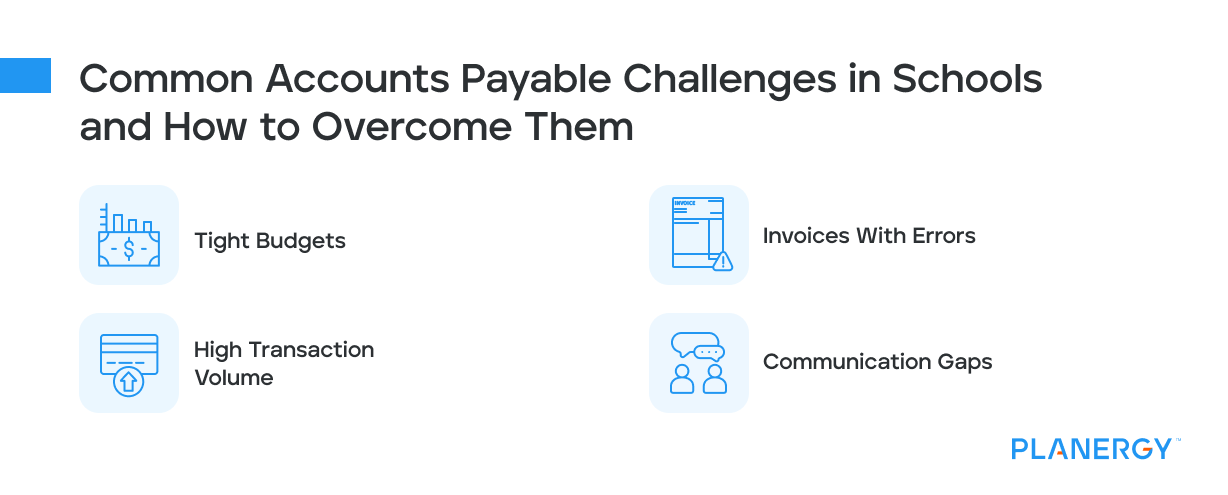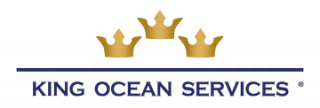Running a school takes more than great teachers and lesson plans. It also means keeping track of all the money coming in and going out.
One big part of this is taking care of accounts payable (AP)—the money schools owe for supplies, services, or equipment.
This guide breaks down how schools can handle AP efficiently and avoid problems, ensuring their finances stay in good order.
Whether you’re dealing with a small early childhood (pre-K) program, or a large school district comprised of elementary schools, middle schools, and high schools, making the most of procurement is crucial to ensuring schools have access to the funding they need.
Understanding Accounts Payable in Schools
Accounts payable is simply the money schools owe to vendors for things they’ve bought but haven’t paid for yet.
Think of it like when you order a laptop online with the promise to pay later—it’s the same idea for schools.
It could cover textbooks, computers, building repairs, or even catering for an event.
Why is it important? Because keeping track of what’s owed ensures the school knows what it’s spending and avoids overpaying or double-paying suppliers. For example, if a school buys 10 computers for its lab, someone has to check that they’ve received all 10 before paying the invoice.
Keeping AP organized makes budgeting easier and helps schools build good relationships with vendors by being reliable payers.
The Importance of Accurate Invoices and Documentation
Invoices are like receipts schools get from suppliers after ordering something.
These receipts usually state what was ordered, how much it costs, and when payment is due.
If invoices aren’t checked carefully, mistakes can sneak in—like a school being charged for supplies it never received.
For example, if a school orders 30 desks but only 25 are delivered, it shouldn’t pay for all 30.
Someone needs to match the invoice (the supplier’s bill) with the original order and the delivery report to spot the issue.
This is where accurate records are helpful.
Schools that keep everything organized—like keeping proof of an order and delivery confirmations—are less likely to deal with confusion or overpayments.
Staying organized is especially important since you have multiple departments (or schools, like in a multi-academy trust to purchase for, like physical education, performing arts, special education, English, World Languages, and technical education.
There’s an added layer of complexity when it comes to employee reimbursements since teachers often purchase some of their own classroom supplies.
Efficient accounts payable management isn’t just about paying bills—it’s about saving time, preventing errors, and building trust with vendors. By automating processes, keeping accurate records, and fostering strong relationships, schools can better support their mission and ensure financial stability.
Automating Accounts Payable Processes for Greater Efficiency
Some schools still manage AP the old-fashioned way, with loads of paper and manual data entry.
That system might work but takes time and leaves room for mistakes. Automating AP—that is, using software to handle most of the work—can make life a lot easier.
But automating your accounts payable department doesn’t mean getting rid of all your accounts payable clerks.
It means freeing the main employees from monotonous and error-prone tasks so they can spend their time doing more productive work, like negotiating better deals with.

Fewer Mistakes
People make mistakes. Maybe someone accidentally enters the wrong number in the general ledger or forgets to record a payment.
Automation fixes these problems by doing most tasks for you.
For instance, software can automatically scan an invoice and compare it to the order details, flagging errors immediately.
It may be tempting to manually enter everything into an Excel spreadsheet, especially since that makes generating expense reports easy.
But, Excel won’t catch typos and other discrepancies like an automated AP system with three-way matching would.
Faster Payments
Manual approvals can slow down payments, making suppliers unhappy.
Automation sends invoices through faster.
For example, when administrators get a notification to approve a payment, they can do it online—often from their phone—speeding up the whole process so it gets done in a timely manner.
Paying early can even earn discounts from some vendors!
Saves Time
When the paperwork gets handled automatically, school staff can focus on more important jobs, like planning budgets or negotiating vendor contracts.
A school district in Kansas used AP software and cut its invoice processing time by half, allowing staff to take on other projects.
Best Practices for Managing Supplier Relationships and Payments

Pay on Time
Paying vendors on time shows that the school is reliable to work with. Vendors depend on prompt payments, and delays can damage trust.
Suppliers are often more likely to offer better delivery times or discounts when you pay quickly.
Some school districts have found that keeping payments on schedule strengthens supplier partnerships while keeping ample cash flow.
Negotiate Terms
Schools can negotiate terms with vendors instead of sticking to the default payment plan.
For instance, they might ask for discounts when buying in large quantities or longer payment timelines.
A high school once negotiated an installment payment for expensive new sports equipment, giving the school breathing room in its budget.
Be Transparent
When schools communicate openly with vendors about when payments will happen, it builds trust.
For example, if a school faces a budget delay, informing the vendor beforehand prevents surprises.
Some schools even use tools to keep suppliers updated with payment statuses so everyone is on the same page.
Ensuring Compliance with School Finance Regulations
Schools have strict rules regarding money.
Audits and budgeting policies are common, meaning schools need clear, accurate financial records.
A school that doesn’t follow these rules could face fines or even lose funding.
Keeping all AP documents organized, such as invoices and payment approvals, makes it easy to prove proper spending.
For instance, during a state audit, a school district could quickly show all its records, avoiding penalties and proving its finances were in order.
Make sure everything you do is in accordance with district policies, any requirements imposed by the Board of Education, or Title IX and in line with any goals of your strategic plan.
This way, if you ever have to show financial reports at board meetings, everything is much simpler and less stressful.
Common Accounts Payable Challenges in Schools and How to Overcome Them

Tight Budgets
Schools often struggle to stretch their budget far enough to cover everything.
To deal with this, they can focus on planning ahead with budgeting or GAG pooling and looking for discounts or cost-saving measures, like consolidating purchases with one vendor.
No matter what your enrollment numbers and initiatives look like, making every dime count ensures all students get access to quality education.
Invoices with Errors
Mistakes, like double billing or incorrect charges, are common issues.
Automated systems can help spot these errors by matching invoices to purchase orders and delivery receipts.
When a school in New York started using automation, it caught dozens of invoice errors in just one month—saving thousands of dollars.
High Transaction Volume
Schools buy many different things from many vendors, and managing all these transactions can feel overwhelming.
Automation makes this easier by processing invoices and payments in batches, keeping everything tracked without extra manual work of managing check runs.
Communication Gaps
Sometimes, departments don’t talk to each other, which causes delays or confusion in accounts payable.
Using shared tools and setting clear processes for approvals fixes this.
For instance, staff at a large urban school district started using a collaborative platform to approve invoices in real time, saving weeks in payment delays.
Reporting and Monitoring Accounts Payable for Financial Transparency
Regularly checking and reporting AP balances helps schools manage their finances. Reports can show how much is still owed, which payments are overdue, and whether any vendors need follow-ups.
This information isn’t just helpful for administrators—it also keeps school boards and the community informed about how funds are being used.
For example, one school started creating monthly AP summaries for its school board.
This report flagged overdue invoices early, helping the board make better decisions about budgeting and payments.
Tools that track AP in real-time can make reporting quick and accurate, letting schools focus on improving their financial health.
Wrapping Up
Good accounts payable management isn’t just about paying bills; it’s about supporting the school’s mission and keeping everything running smoothly.
By using tools like automation, sticking to clear processes, and building strong relationships with vendors, schools can streamline their finances and create systems that benefit everyone—from administrators to students.




